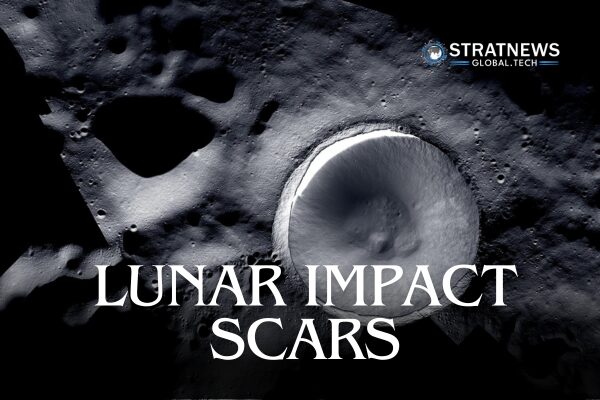Ancient Lunar Canyons Formed in Minutes by Cataclysmic Impact
Two enormous lunar canyons on the far side of the moon, comparable in size to the Grand Canyon, were formed in an instant by a massive asteroid or comet impact around 3.8 billion years ago. Unlike Earth’s natural erosion process, these lunar formations were carved in less than 10 minutes by flying debris from the violent collision, according to new research.
A Monumental Impact Shaped the Moon’s Surface
The canyons lie within the Schrödinger impact basin, near the moon’s south pole. Scientists used data from NASA’s Lunar Reconnaissance Orbiter and computer simulations to track the movement of rocky debris launched by the impact. The study, published in Nature Communications, found that this event released about 130 times the energy of the world’s current nuclear arsenal.
The debris traveled at speeds of up to 2,200 miles (3,600 km) per hour, carving two massive canyons: Vallis Planck, measuring 174 miles (280 km) long and 2.2 miles (3.5 km) deep, and Vallis Schrödinger, at 168 miles (270 km) long and 1.7 miles (2.7 km) deep.
A Relic of the Early Solar System
The asteroid or comet that struck the moon was approximately 15 miles (25 km) in diameter, even larger than the impactor that led to the dinosaurs’ extinction on Earth 66 million years ago. This event occurred during a period of intense bombardment in the early solar system, when shifting orbits of giant planets like Jupiter and Saturn sent space rocks hurtling toward the inner planets.
As the impactor slammed into the moon, it sent rock flying into space before crashing back down, creating the canyons through a series of smaller secondary impacts. Unlike Earth, which renews its surface through plate tectonics, the moon has retained these scars for billions of years.
Relevance for Future Lunar Exploration
The findings have implications for NASA’s Artemis mission, which aims to return astronauts to the moon. The Schrödinger impact basin is near the planned exploration zone, making it an ideal location for studying lunar history.
Debris from the impact scattered ancient rock across the region, making it easier for astronauts to collect samples from the moon’s early formation. These samples could help scientists confirm theories about the moon’s origin, including whether it formed from a giant impact with Earth and if its surface was once covered by a magma ocean.
With inputs from Reuters


